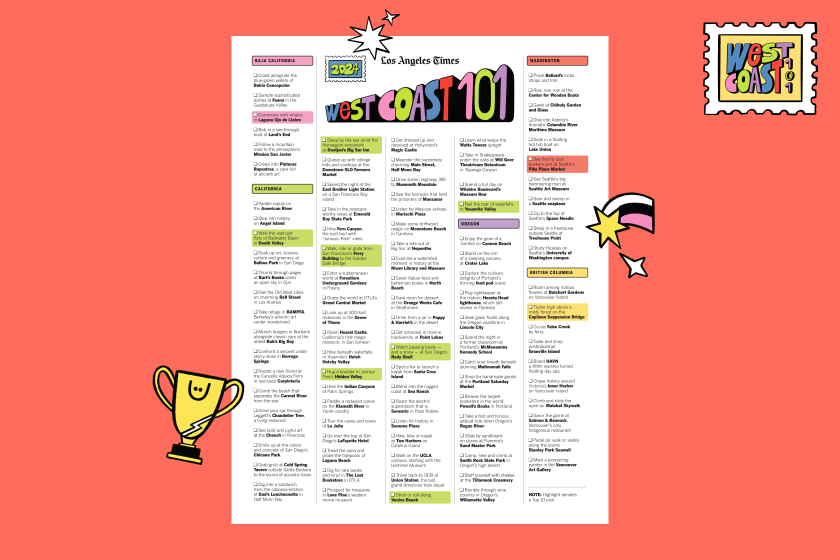Learn about the secret lives of trees — and find the best one to plant in your yard right now

For my sixth-grade biology class, I identified leaves with a field guide book. How I wish I’d had a plant identification app at that time! But part of the fun was peering into a book, memorizing whether a maple leaf was lobed or compound (the answer is the former, as you leaf lovers know). Even better would’ve been having arborist Alison Lancaster by my side to tell me all about the lives of those maples.
Lancaster, who guides tree lovers through the forests of Los Angeles, peppers her guests with facts and stories about white alders, Torrey pines and coast live oaks along the way. She’s been an arborist for seven years, working for parks and cities, but she also provides individual consultations for landscapers and landowners about the health and placement of their trees, as well as which to select for planting. Recently, she began giving tree walks with the Theodore Payne Foundation, showcasing the beauty of the foundation’s nearby Santa Cruz Island ironwood, sycamores and palo verde. I had a chance to meander down the Gabrielino Trail near the Jet Propulsion Laboratory in Altadena with her.
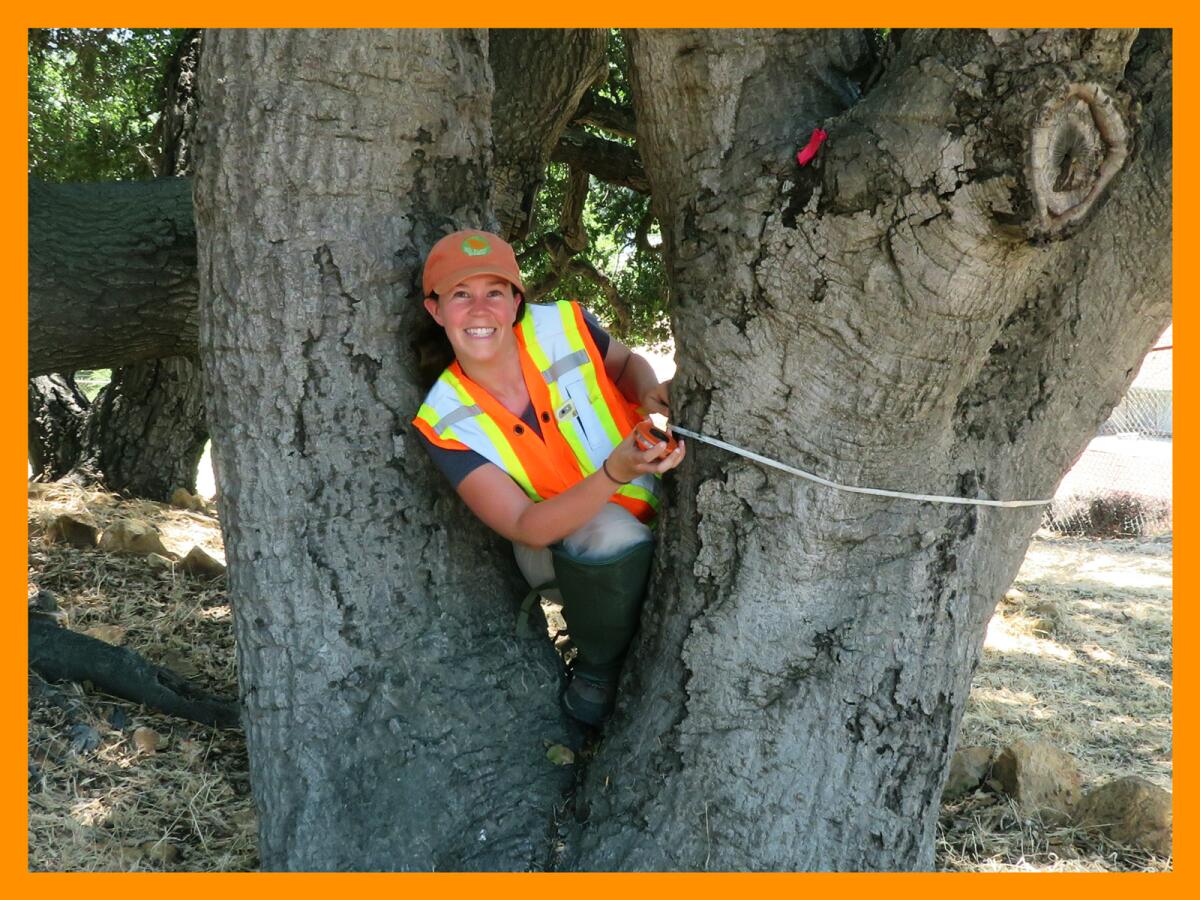
Walking with Lancaster is a study in mindfulness. Instead of rushing along the flat, easy hike, we stop to inhale the scent of elderberry leaves. (To her, they smell like popcorn; to me, like green pepper). We stroll slowly past sycamores, and Lancaster notes their contorted branch structures. As we traverse the Gabrielino Trail, Lancaster points up at an old beehive notched into a twisty native Western sycamore tree. “There’s still honey in there, and (the bees) may come back one day,” she tells me. Another sycamore bears a long crack in a heavy branch that hangs over the hiking path, which Lancaster calls an “imminent failure” — something she would prune immediately for safety.
Get The Wild newsletter.
The essential weekly guide to enjoying the outdoors in Southern California. Insider tips on the best of our beaches, trails, parks, deserts, forests and mountains.
You may occasionally receive promotional content from the Los Angeles Times.
As we pause before a magnificent blue gum eucalyptus, I learn they’re an arborist’s nightmare. The tree may look strong like a Roman pillar, but according to Lancaster, it could be harboring invisible decay in its root system. “There’s no sign of the decay until the tree falls,” she says. Meanwhile, just 20 yards down the trail, native coast live oaks squat directly on top of granite, drawing their nutrients by wrapping their roots around and under the rock to find the soil. A stronger tree could not be found.
The long-living oaks tell stories. A fire-singed live oak displays dead tissue that spans the length of its undersides, even high up. Lancaster muses that the culprit may be the 2009 Station Fire, which still lives large in Angelenos’ memories. Another oak’s fallen branch touches the ground, yellow fungi growing on its side. “The life cycle of the oak is that yes, the branch died, but it contains valuable nutrients and resources that get recycled back through the food web or maybe even back to the trees that branch falls nearby,” Lancaster says. “Those are the beautiful little things that we have to stop and pay attention to see.”
I asked Lancaster a few questions about our relationship with trees and what we can do to boost their strength in a time of climate crisis.

Why do you think L.A. has such a hunger to know its trees?
I think there are two things happening. One is that people are very climate-conscious right now, and they want to understand how they themselves can take care of the trees they have and ensure that they have their own urban canopy.
The other thing — and I think this is a very Los Angeles thing, maybe even just a California thing — is that we view our trees as family members, as fixtures of the site. When I do individual tree consultations with clients, people get really emotional talking about their trees. They feel bad when there’s something wrong with their tree, like it’s a family member that’s sick and you just want to know how you can help them.
That’s very observant; we have such a symbiotic relationship with them. What can Angelenos do at home to help their trees?
If you’re planting trees right now, you should know about the importance of young tree care. In the nursery, select a good specimen. Consult resources online like the Urban Tree Foundation about how to properly plant a tree. Once it’s in the ground, watering is really important. Prune young trees of additional trunks and weak branch attachments to ensure they have a good strong structure, which is the blueprint for your tree’s future. The time to address those things is when the tree is small.
Why should we plant native trees?
It’s worth planting a native tree for so many reasons. They’re adapted to our climate, tolerate drought conditions and are able to grow in the poor quality soils found on most urban sites. They also provide greater wildlife habitat value than non-native trees, and are becoming rare in some cases: for example, the Southern California black walnut, whose population is decreasing as development in our city has been shrinking its habitat area.
If there was a single native tree you could recommend homeowners plant, what would it be?
The most universally easy native tree is coast live oak. They grow up pretty quickly, and can be tall within 10 or 15 years to provide a lot of good shade. Once they hit their mature height, they slow down and start spreading out, so you can get a nice shade tree pretty quickly. And they’re not high-maintenance trees. In fact, the less care that you provide to an oak tree, the better. They say, “We don’t like being watered all the time, so leave me alone. Maybe in the winter if there’s not enough rain, you can give me some water.”
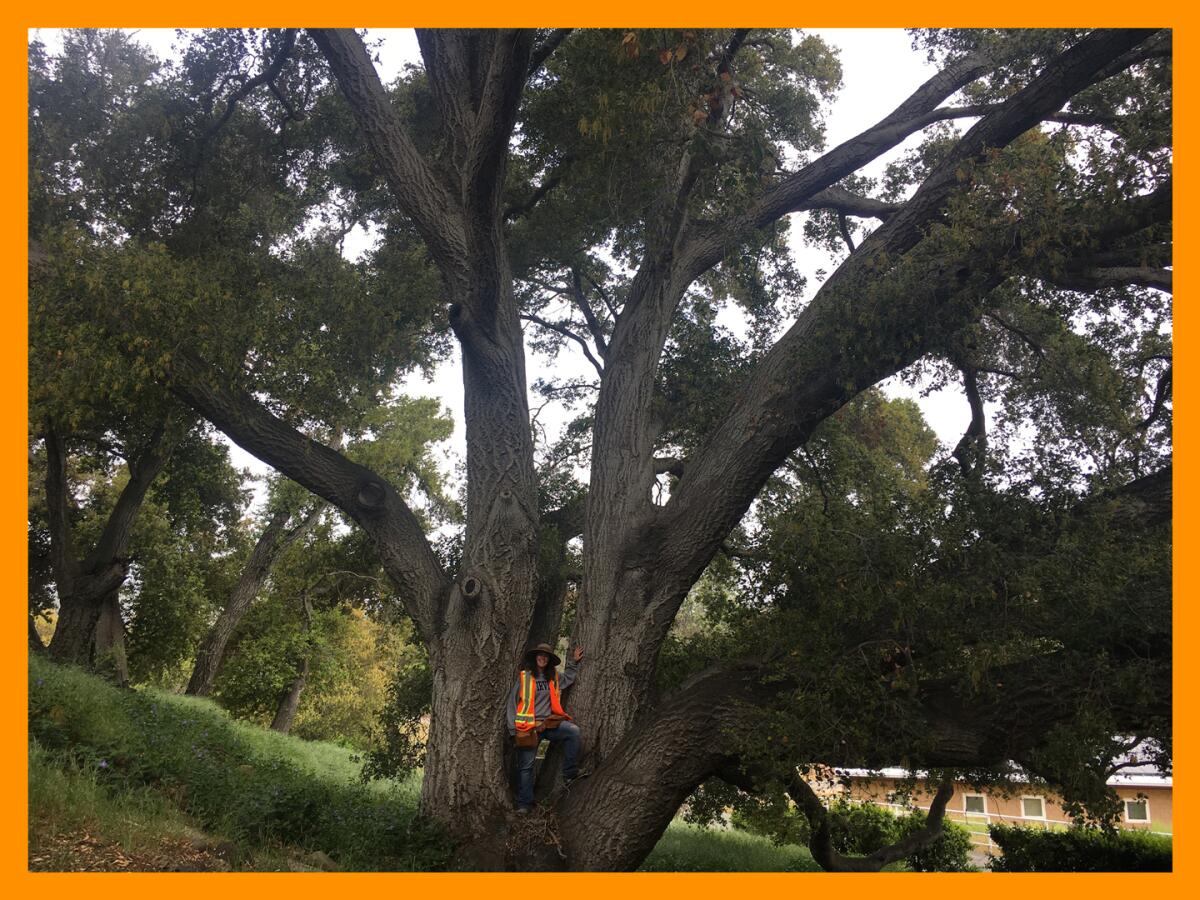
When should homeowners prune a tree? Is it right to prune every year?
You should prune because you have a reason to, either safety or beauty or because you need to clear it off your house to lower fire risk. I like to bring those perspectives to clients, who are frightened of their tree because a neighbor walked by and said, “Oh my God, your tree is leaning; aren’t you terrified living under it?” That happens all the time. And then they say, “I didn’t know I should be afraid of it. I guess I should call an arborist and ask them.” A perfectly healthy tree can lean.
For any aspiring arborists out there, how did you get into the profession?
I did a forestry certificate at a community college in Azusa. Afterward, I realized that the Forest Service was probably never going to hire me, unless I was willing to move. I’m from Los Angeles and have no plans of ever leaving, so I had an awakening that I could do urban forestry right here.
I did a citizen science project with the City of Pasadena to survey the Arroyo for the shot hole borer, an invasive bug whose ground zero is Pasadena. Then I volunteered for their street tree inventory, updating the files and making sure all the trees were assigned to the correct location on their map. Through the supervisor, I started working for a consulting arborist for five years, and then I bought his business, which is now my business, Alison Lancaster Consulting Arborists LLC.
How can regular folks (nonarborists like me) volunteer to help our trees?
For volunteering, get involved with City Plants directly or with any of their partners. Get involved with your local urban forest council — attend their meetings or talk to your local council representative. Find out what’s happening in your city’s urban forest, what the issues are and what needs to be done to solve them.
If you’re interested in native trees and plants, get involved with your local chapter of California Native Plant Society, join a Theodore Payne Foundation community planting event or volunteer with Tree People on a habitat restoration project.
To sign up for future walks with Lancaster, including her upcoming “Ask an arborist” and “Understanding oaks” walks, visit the Theodore Payne Foundation website.
3 things to do

1. Be awed by site-specific desert installations. Heading out to the desert in the spring is always a good idea: Wildflowers bloom aplenty and hikes are nice and cool. Even better sightseeing? Taking in huge installations (for free!) in the sweeping desert landscape. This spring, from March 4 to May 7 at art biennial Desert X, you can see pieces by Tschabalala Self, Héctor Zamora, Rana Begum, Marina Tabassum, Mario García Torres and L.A. natives Lauren Bon and Matt Johnson, among others. Go at sunrise or sunset for the most dramatic photos (especially by starlight). The next day, revel in chic designs at Modernism Week, a celebration of all things Midcentury Modern in architecture and design, or head outdoors for an easy, shaded Palm Canyon hike (or do Cactus to Clouds, if you have the will). My personal favorite is riding the soaring Palm Springs Aerial Tramway up to Mt. San Jacinto and doing any of the hikes there, from easy to challenging.

2. Prime your palette for botanical painting. After a stroll among the irises and wisteria this spring, you’ll feel inspired to create. Lucky you: The Los Angeles Arboretum is holding an eight-week oil painting course for beginners through the spring and summer. The class runs on Saturdays from 9:30 a.m. to noon; the next complete series begins April 22 and ends June 10. Artist Ron Pettie teaches the course, providing demos and working with newbies on skill-building exercises. All materials are provided, including acrylics and oil paints. By the end, you will have finished two to three completed paintings. When your friend asks where the gorgeous artwork in your house came from, you can point to the signature and say, “Me.” The series costs $60 for Arboretum members and $80 for nonmembers; register online here.
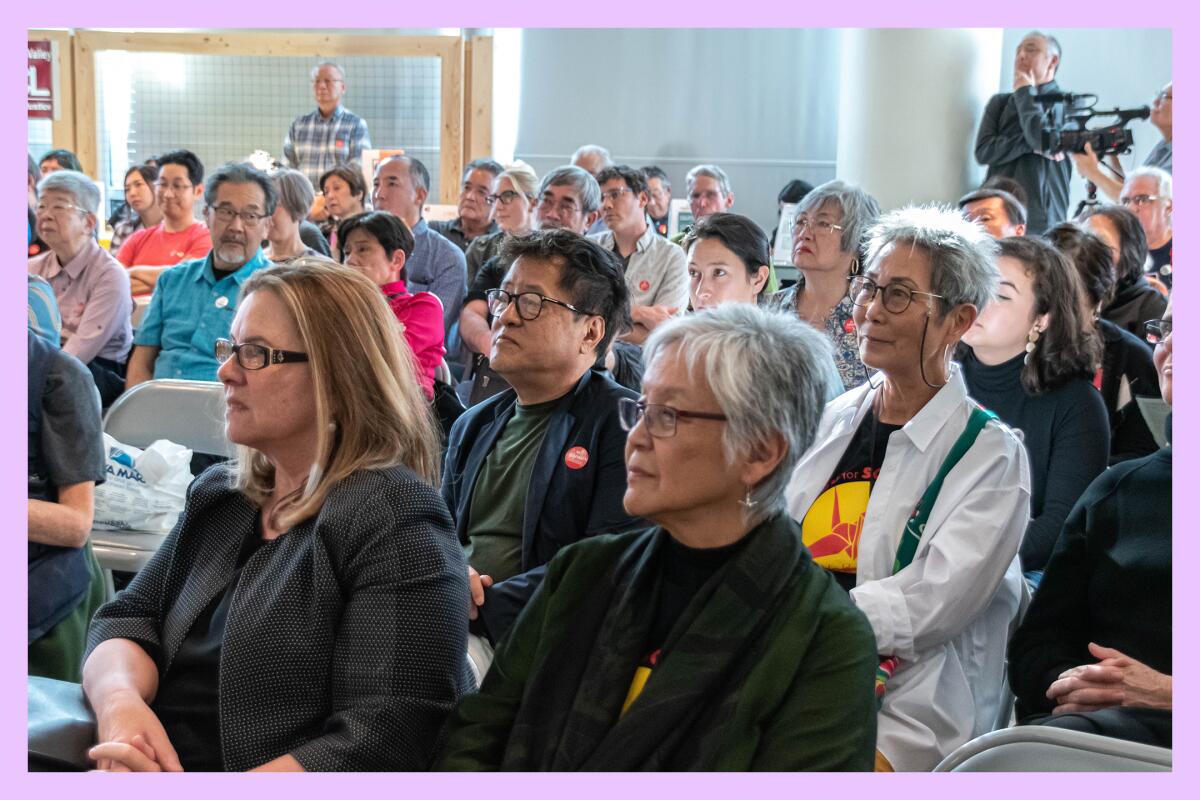
3. Remember our elders with music, discussion and art. On Feb. 19, 1942, President Franklin D. Roosevelt signed Executive Order 9066, which empowered the U.S. military to remove and incarcerate people of Japanese ancestry from the West Coast, including Los Angeles. On Feb. 18 at 2 p.m., the Japanese American National Museum will present an event of solidarity and antiviolence, featuring musical performances, art and a conversation between Manjusha Kulkarni, executive director at AAPI Equity Alliance and co-founder of Stop AAPI Hate, and traci ishigo, director of programs and healing justice at Vigilant Love. You’ll need to reserve ahead for the free, in-person event, which also will be available for viewing on JANM’s YouTube channel.
The must-read
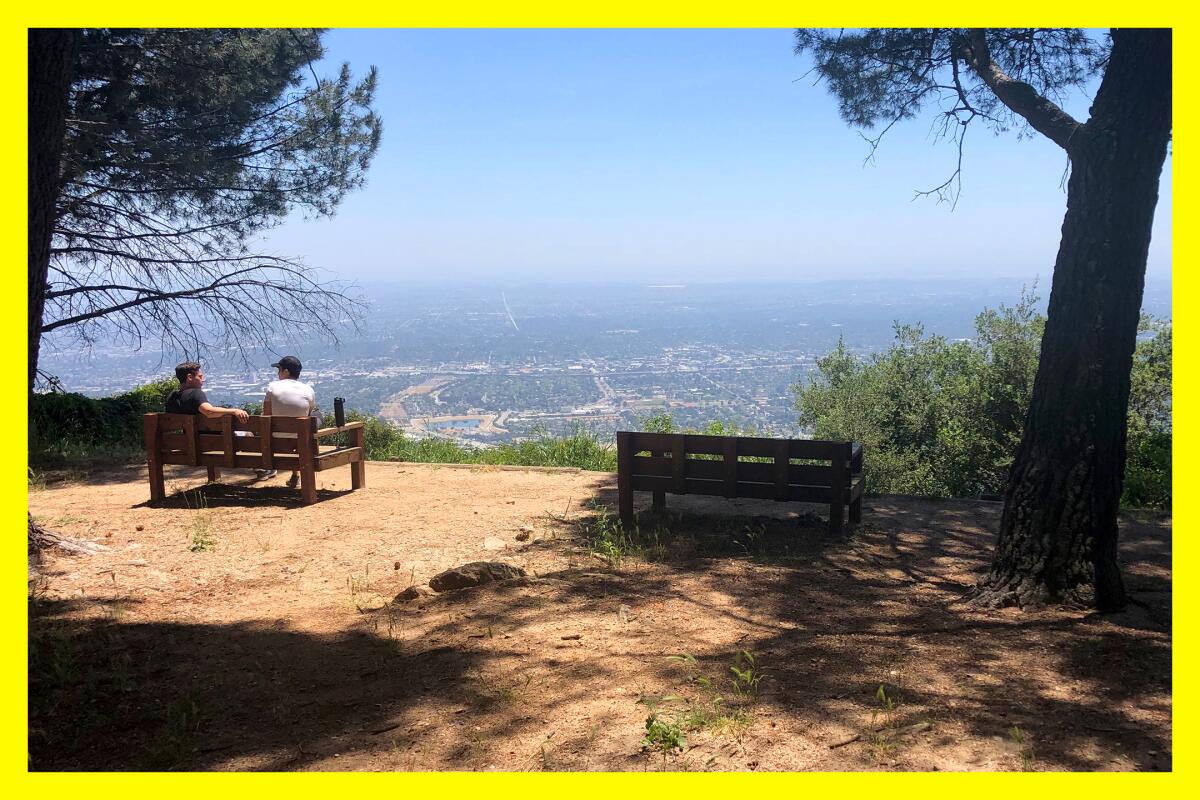
When you set out with your partner on a hike, it may not occur to you that you have totally different reasons for hiking. You could be ready to work up a sweat, while your partner is just looking to soak in the view and feel the breeze. In this advice column for REI, Karla Amador offers useful tips to the couple struggling to achieve different trail goals on the same hike. After all, a hike shouldn’t end in tears and a silent car ride home. Save that for IKEA.
Happy adventuring,

Check out “The Times” podcast for essential news and more.
These days, waking up to current events can be, well, daunting. If you’re seeking a more balanced news diet, “The Times” podcast is for you. Gustavo Arellano, along with a diverse set of reporters from the award-winning L.A. Times newsroom, delivers the most interesting stories from the Los Angeles Times every Monday, Wednesday and Friday. Listen and subscribe wherever you get your podcasts.
P.S.

Every desert field, hiking trail and sidewalk crack is teeming with a cacophony of oleander, brittlebrush and my personal favorite, dune primrose. If you’re enjoying these blooms as much as I am (but aren’t sure you’ve identified them correctly in the wild), pop open your iNaturalist app to snap a photo and find out what they are. It helps me to appreciate my botanic surroundings — and also to know what’s poisonous, like ever-present oleander.
For more insider tips on Southern California’s beaches, trails and parks, check out past editions of The Wild. And to view this newsletter in your browser, click here.
Sign up for The Wild
We’ll help you find the best places to hike, bike and run, as well as the perfect silent spots for meditation and yoga.
You may occasionally receive promotional content from the Los Angeles Times.



